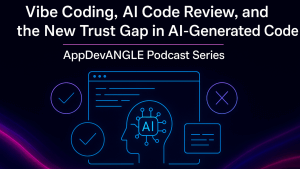Kubernetes turns 10 this year, but it shows no signs of slowing down. As enterprises continue to modernize monolithic applications, move toward containerization, and push for faster delivery pipelines, Kubernetes remains central to that transformation. But what does it take to manage the complexity, scale, and evolving needs of this massive open source ecosystem?
At Open Source Summit North America 2025, I sat down with Kat Cosgrove, Head of Developer Advocacy at Minimus and long-time Kubernetes contributor. Kat offered a behind-the-scenes look at how Kubernetes release cycles are coordinated, how SIGs (special interest groups) work, why AI can’t replace real technical documentation (yet), and what the project is doing to combat complexity and skill gaps through contributor mentorship and knowledge rotation.
Open Source at Enterprise Scale
Kubernetes releases three times a year, coordinated by the SIG Release team, which includes over 25–30 contributors per cycle. Kat, as the subproject owner, plays a key role in managing the coordination efforts. The release cycle involves wrangling not only contributors, but also inputs from multiple SIGs including docs, enhancements, and security. “It’s a grind,” she noted. “We’re wrangling hundreds of contributors every release.”
Key features of Kubernetes release governance:
- Four-month cycles paced to reduce burnout
- Strict documentation requirements: no user-facing feature goes live without full documentation
- Human judgment > automation for release gating decisions
- Open channels for contributor growth, including SIG Docs and shadowing programs
This rigor ensures Kubernetes continues to meet the needs of enterprise developers while remaining a community-driven project.
Helpful for Toil, Not for Technical Content
When asked if AI could assist in writing documentation, Kat didn’t hesitate: “No.” While she sees value in using AI to reduce contributor toil (e.g., tagging issues, labeling PRs), she made it clear that AI-generated documentation isn’t good enough, at least not for a project of Kubernetes’ scale and impact.
Kubernetes SIG Docs currently disallows AI-generated documentation, citing quality, accuracy, and consistency issues. However, there may be room in the future for AI to assist with style guide compliance or automating metadata workflows.
“We don’t enforce self-documenting code, but we do enforce self-written documentation.” —Kat Cosgrove, Minimus
Addressing Skill Gaps Through Community-Driven Onboarding
Kubernetes isn’t just one of the most important open source projects in the world, it’s also a training ground for the next generation of open source maintainers. With many contributors rotating in and out of release teams, Kat emphasized the importance of the shadow program, which helps new contributors learn quickly and move into leadership roles.
Key takeaways from the community engagement model:
- Kubernetes acts as an entry point for contributors, many of whom are recent grads
- The release team is seen as a gateway to SIG leadership roles across the project
- The philosophy is clear: “Train people to replace us.”
- The project maintains a public calendar, contributor ladder, and orientation sessions to reduce onboarding friction
This model serves as a blueprint for how other open source communities, and even enterprises, can address the widening skills gap in cloud-native infrastructure.
What Enterprises Can Learn from Kubernetes Governance
Kubernetes, as a project, mirrors many of the same challenges faced by enterprises:
- Complexity across teams and tools
- The need for shared standards and release practices
- Tension between velocity and quality
- Difficulty in onboarding and retaining skilled contributors
But Kubernetes doesn’t try to solve this with top-down mandates or automation alone. Instead, it focuses on:
- Structured but adaptable governance
- Open contributor pipelines and mentorship
- Documentation as a first-class requirement
- Flexibility in decision-making without emotional attachment to past choices
As Kat put it: “Don’t get emotionally attached to features or decisions. Be ready to pivot.”
That’s advice many enterprise leaders could benefit from as they pursue modernization efforts in an ever-changing tech landscape.
Community-Driven, Production-Ready, and Always Evolving
Whether you’re just starting with containers or knee-deep in hybrid cloud complexity, Kubernetes remains foundational. But it’s not just the technology, it’s the people, processes, and community structures that keep the project moving forward.
From her leadership role in SIG Release to mentoring first-time contributors, Kat Cosgrove embodies the ethos of sustainable open source. Enterprises looking to build resilience into their DevOps pipelines would do well to study how Kubernetes manages scale, onboarding, and governance because it’s not magic; it’s intentional.
And as we look to the future, whether toward WebAssembly, serverless, or AI-driven ops, it’s clear that open source contributors will continue to play a pivotal role in shaping what comes next.
Until then, stay curious. Stay building.



